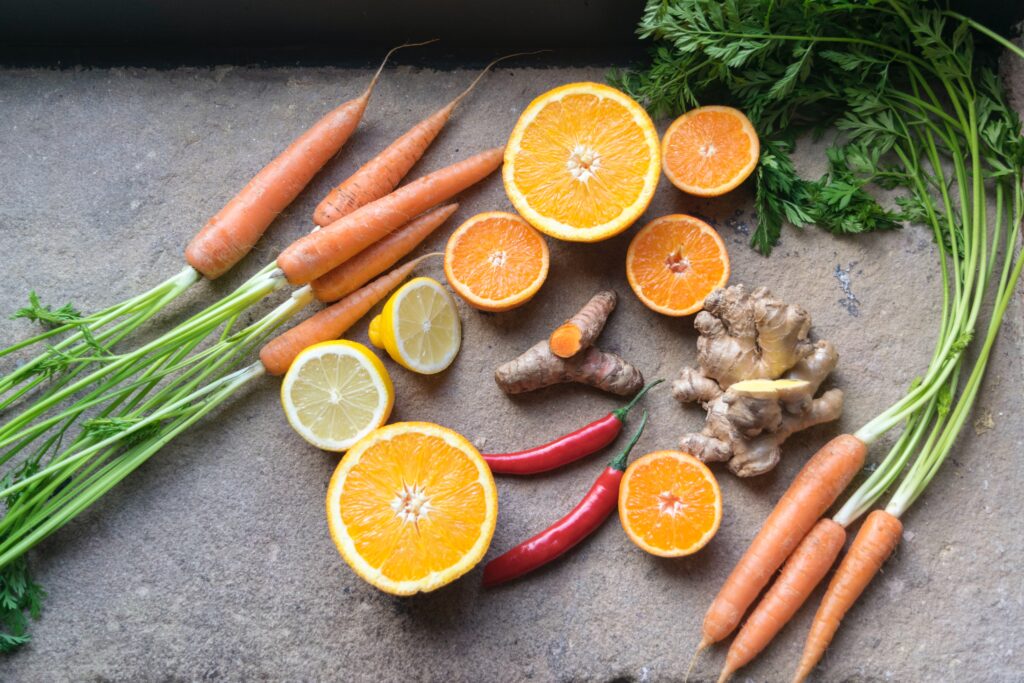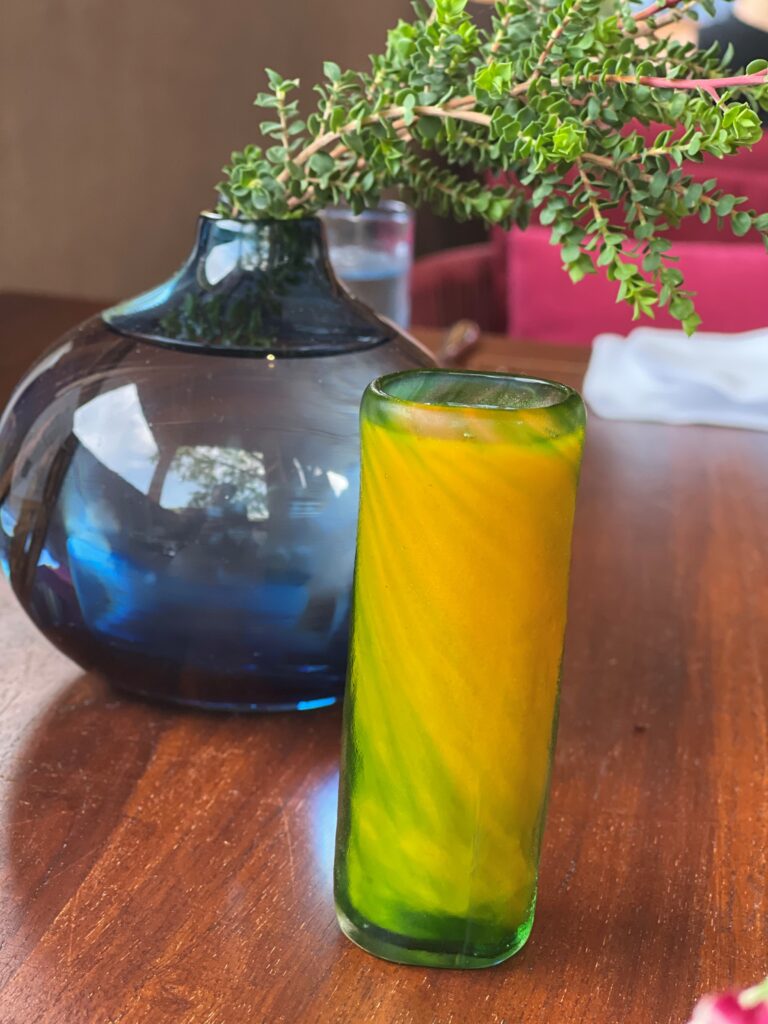Turmeric is one of the most effective and powerful nutritional supplements available.
But What Is Turmeric, and How Do You Use It?
Turmeric is a plant that grows underground and belongs to the ginger family. It has a somewhat spicy bitter taste and is largely produced in India. It’s commonly used in Asian food and is the main spice in curry. It’s also the spice responsible for creating the beautiful golden hue in many dishes.
Its most recent popularity is mostly due to its high antioxidant content and anti-inflammatory properties.
Turmeric has a good amount of minerals, including:
- Manganese
- Potassium
- Iron
- Calcium
- Zinc
- Copper
It’s rich in pyridoxine (or vitamin B6) and contains adequate levels of Vitamin C as well. It has one of the highest known total-ORAC levels. Which means it’s very high in antioxidants. Which is probably why golden milk lattes (made with turmeric root) are gaining so much popularity due to their immense healing benefits.
The turmeric you see in grocery stores and on spice cabinets is actually made from grinding the roots from the turmeric plant. You can also find turmeric in supplement form (capsules, gummies, and powders) and in teas.
Does Turmeric Help With Inflammation?

You’ve probably heard people talk about inflammation or an anti-inflammatory diet. You might be wondering what all the fuss is about. So, let’s talk a little bit more about inflammation and what you need to know.
Inflammation is a normal and healthy response to:
- Harmful bacteria
- Cell damage
- Harmful bacteria
- Irritants
- Pathogens
- Toxic compounds in the body
Acute, short-lived inflammation is normal. This temporary inflammation may be the result of:
- Allergies
- Bumps
- Bruises
- Burns
- Cuts
- Scrapes
- Infections
- Other minor injuries
But when inflammation goes on for too long… It can set the stage for disease and inflammation related health conditions like autoimmune conditions.
With chronic inflammation, your body is walking around on high alert at all times. It’s in a state of prolonged emergency and that can have devastating consequences. Chronic inflammation can cause major imbalance and lead to serious disease — if left unchecked.
Inflammation can cause discomfort throughout the body, especially in the joints. Symptoms of chronic inflammation include:
- Brain fog
- Lack of energy
- Digestive issues
- Mood disorders
- Frequent infections
- Aches and pains
- Skin issues (rashes, itching, acne)
- Sleep issues
- Headaches
- Weight gain or weight loss
- Hormone issues
Benefits of Incorporating Turmeric in Your Diet
There’s a reason that cognitive decline in India is far lower than the United States. This is because India consumes large amounts of turmeric each day. Turmeric is truly one of nature’s secret weapons to combat inflammation.
Incorporating turmeric into your diet (in any form) can help reduce your risk from health conditions and diseases like:
- Heart disease
- Cancer
- Infectious disease
- High blood pressure
- Stomach ulcers
- Degenerative conditions
- Rheumatoid-arthritis
- Alzheimer’s disease
- Heartburn
- Metabolic syndrome
It may even help to prevent bone loss.
This is why it’s so important to reduce inflammatory foods and incorporate more anti-inflammatory foods into your diet for optimal health.
8 Easy Ways to Incorporate Turmeric Into Your Diet Today
Many athletes are using turmeric after high intensity or strength training sessions to reduce inflammatory markers, oxidative stress, and muscle damage. Talk about a supplement designed to help you make gains and enhance performance!
However, you should know that turmeric can be hard for your body to absorb. To remedy this problem, add a bit of black pepper. Black pepper contains piperine that can help inhibit the liver from pushing curcumin out of the body.
Turmeric’s benefits will be even further enhanced and the bioavailability will be greatly improved. You will find that many turmeric supplements already contain piperine to prevent this issue, so check the label.
I like to make a morning detox shot that has apple cider vinegar (make sure to buy the kind with “mother”— I like Braggs), lemon juice, water, turmeric, organic extra-virgin olive oil, and a pinch of black pepper or cayenne pepper. I down it and go.
Combining turmeric with a fat source — such as organic extra-virgin olive oil or even an avocado — can help curcumin be absorbed easily into the lymphatic system.

Other ways to incorporate turmeric into your diet:
- I love to add turmeric or curry to soups. I think the strong flavor in curry is always balanced well with coconut, so I’m a fan of Thai chicken coconut curry soup. There are endless coconut curry recipes to try online. Vegan or vegetarian coconut curry recipes are always a fun way to change things up and add some spice to your life.
- Add turmeric to rice or cauliflower rice. Again, I’m a huge fan of the coconut and curry combination, so I like to make coconut curried cauliflower rice, and it’s delicious.
- Sprinkle curry or turmeric over vegetables, mix them with salt and olive oil, and then roast them in the oven. You guessed it! Cauliflower is one of my favorites, but root vegetables also taste delicious. I personally like adding butternut squash to the mix because it’s natural sweetness offsets the slightly pungent peppery taste of turmeric.
- Roast rutabaga, turnips, and parsnips in the oven and then puree them in the food processor with a little chicken bone broth, ghee, turmeric, and salt. Serve them as a side dish reminiscent of mashed potatoes.
- As I mentioned before, golden milk lattes are all the rage right now. I make these with either unsweetened almond milk or full-fat organic coconut milk. I like to add fresh ginger, cardamom, nutmeg, and cinnamon to the mix. I make them with a shot of espresso or without.
They are very forgiving so have fun experimenting with your own ideas. Don’t forget to add your pinch of black pepper to increase absorption. If you are going with almond milk, you may want to add a splash of MCT oil or coconut oil for absorption. I also like to add collagen peptides to increase protein content. - Add it to homemade salad dressings made with lemon juice, olive oil, avocado and miso paste.
- Add turmeric to sipping bone broth with some ginger, garlic, green onion, and black pepper for a tasty and nourishing drink.
- Toasting nuts with olive oil, turmeric, and black pepper can be a healthy and tasty anti-inflammatory snack or a great salad topper.
I hope you try out (at least) one of these ideas to help add more turmeric to your diet for optimal health benefits and an improved quality of life.
I personally use turmeric every day to help combat inflammation, and I’ve recommended it to several clients who now use it regularly. It’s an easy step you can take towards a healthy thriving body.
Now I’d love to hear from you! Did you try one of my ideas or did you try one of your own? Let me know in the comments below.
